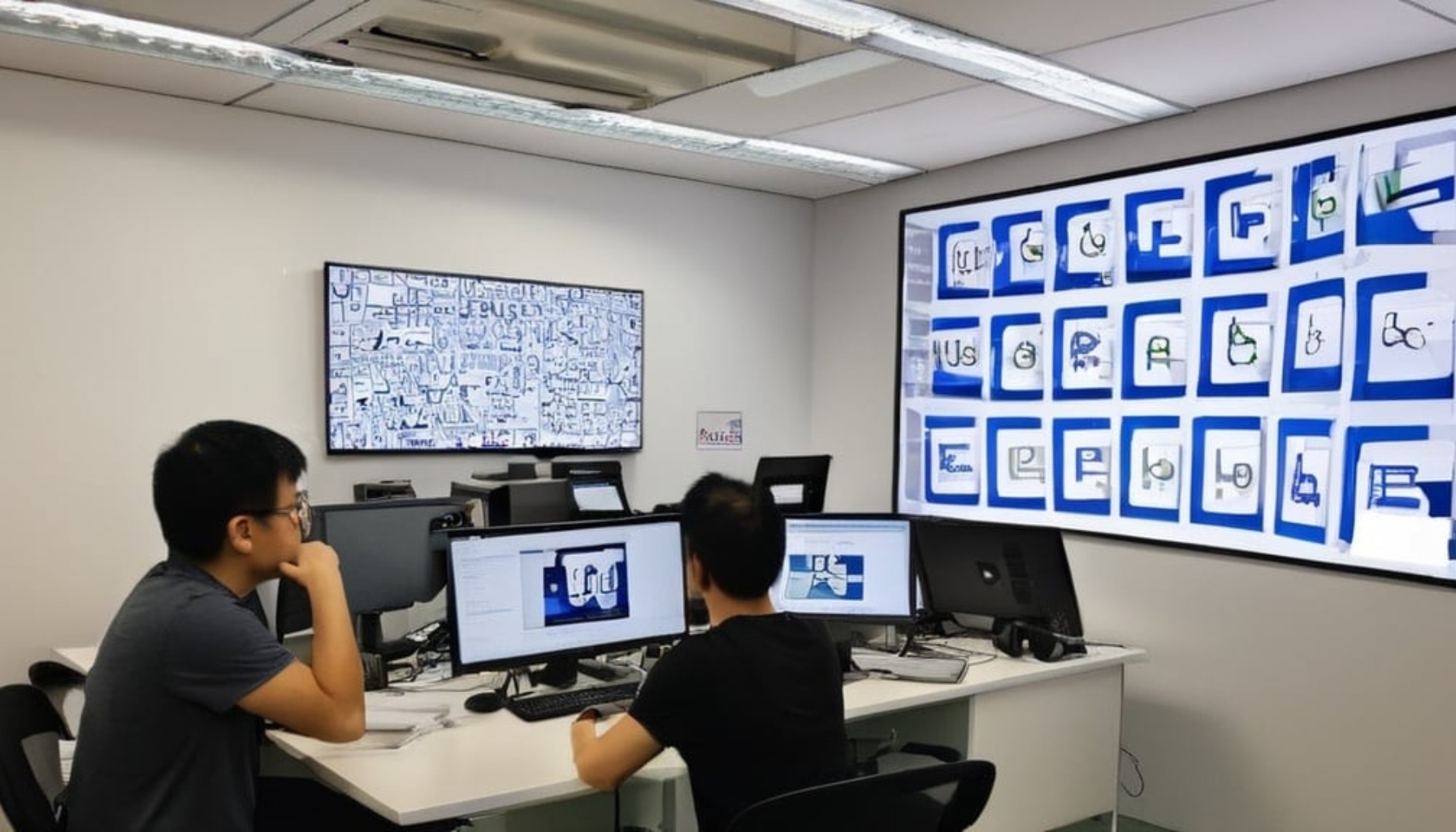Designing CAPTCHA systems involves a delicate balance between ensuring robust security and maintaining a seamless user experience. While CAPTCHAs are crucial for preventing automated attacks, they can also pose significant challenges to users if not designed thoughtfully. This article explores the best practices and advanced techniques for creating effective and user-friendly CAPTCHA systems, as well as the future trends and challenges in this evolving field.
Key Takeaways
- Balancing robustness and usability is crucial for effective CAPTCHA design.
- Optimal placement and frequency of CAPTCHA challenges can minimize user frustration.
- Ensuring accessibility in CAPTCHA design helps accommodate users with disabilities.
- Advanced techniques like AI and adaptive systems can enhance CAPTCHA effectiveness.
- Future trends in CAPTCHA technology will focus on new types and adapting to emerging threats.
Balancing Robustness and Usability in CAPTCHA Design

Designing a CAPTCHA that is both robust and user-friendly is a challenging task. Robustness refers to the CAPTCHA’s ability to withstand adversarial attacks, while usability pertains to how easily legitimate users can solve the challenge. Understanding the trade-offs between these two aspects is crucial. Techniques to enhance usability often involve simplifying the challenge, but this can sometimes compromise security. Conversely, increasing complexity can make the CAPTCHA more secure but less user-friendly. Therefore, maintaining a balance between robustness and usability is essential to ensure a positive user experience without sacrificing security.
Implementing Effective CAPTCHA Strategies

Optimal Placement and Frequency
The strategic placement and frequency of CAPTCHA challenges are crucial for maintaining a balance between security and user convenience. Placing CAPTCHA at critical points such as login attempts or form submissions can effectively deter malicious activities without overwhelming the user. It’s essential to avoid excessive use, which can lead to user frustration and abandonment.
Ensuring Accessibility
Ensuring that CAPTCHA systems are accessible to all users, including those with disabilities, is a fundamental aspect of effective implementation. This includes providing alternative methods such as audio CAPTCHA for visually impaired users. Accessibility not only broadens the user base but also demonstrates a commitment to inclusivity.
Choosing the Right CAPTCHA Type
Selecting the appropriate type of CAPTCHA is vital for both security and user experience. Options range from traditional text-based CAPTCHAs to more advanced image and behavior-based systems. The choice should be guided by the specific security needs and the target audience’s capabilities, ensuring that the CAPTCHA is both effective and user-friendly.
User Experience Challenges with CAPTCHA

Minimizing User Frustration
One of the primary concerns with CAPTCHA is the potential for user frustration. Complex text-based CAPTCHAs or unclear image puzzles can lead to repeated attempts and failures, deterring users from completing their desired actions on a site. This frustration can directly impact user retention and conversion rates, especially for e-commerce platforms where quick and hassle-free transactions are crucial.
Designing User-Friendly CAPTCHAs
The key to overcoming CAPTCHA-related UX challenges lies in selecting and designing CAPTCHAs that are effective against bots and considerate of the user experience. By prioritizing CAPTCHA solutions that minimize user effort while maximizing security, websites can protect against cyber threats without compromising user satisfaction and accessibility.
Balancing Security and Convenience
Each CAPTCHA type offers a different level of security and user experience. The effectiveness of a CAPTCHA system depends on its ability to adapt to new threats while minimizing inconvenience to legitimate users. Implementing the right type of CAPTCHA can significantly enhance a website’s security posture without detracting from the overall user experience.
Advanced Techniques to Improve CAPTCHA

Incorporating Human Skills
Incorporating human skills into CAPTCHA design can significantly enhance its effectiveness. By leveraging tasks that are easy for humans but challenging for bots, such as identifying objects in images or solving simple puzzles, CAPTCHA systems can improve security while maintaining usability. This approach ensures that the challenges remain accessible to legitimate users.
Leveraging AI for Smarter CAPTCHAs
The latest advancements in CAPTCHA technology utilize artificial intelligence and machine learning to create nearly invisible challenges for users. These systems analyze user behavior, such as mouse movements and typing patterns, to differentiate between humans and bots without requiring explicit interaction. This method enhances security and significantly improves the user experience by minimizing disruptions.
Adaptive CAPTCHA Systems
Adaptive CAPTCHA systems dynamically adjust the difficulty of challenges based on the user’s behavior and interaction patterns. By tailoring the complexity of the CAPTCHA to the perceived threat level, these systems can provide a seamless experience for legitimate users while maintaining robust security measures. This adaptive approach ensures that the CAPTCHA remains effective against evolving threats.
Future Trends in CAPTCHA Technology

Emerging CAPTCHA Types
The future of CAPTCHA technology is set to witness significant advancements, driven by the need to enhance security and improve user experience. As cyber threats become more sophisticated, CAPTCHA solutions must evolve to stay ahead, ensuring they do not hinder user engagement.
Adapting to New Threats
Looking forward, the integration of AI, machine learning, and potentially biometric systems will play a crucial role in shaping the future of online security. These technologies will make CAPTCHA more sophisticated, offering stronger defenses against cyber threats while maintaining and enhancing the user experience.
Innovations in CAPTCHA Design
The latest advancements in CAPTCHA technology leverage artificial intelligence and machine learning to create challenges that are almost imperceptible to users. These systems analyze user behavior, such as mouse movements and typing patterns, to distinguish between humans and bots without requiring explicit interaction. This approach enhances security while significantly improving the user experience by minimizing disruptions.
Challenges in CAPTCHA Breaking Techniques

Common Breaking Methods
CAPTCHA systems face numerous challenges, particularly from sophisticated breaking methods. Segmentation attacks are a primary concern, especially for text-based CAPTCHAs, where the accurate separation of characters is crucial for security. Machine learning (ML) and deep learning (DL) techniques have also become prevalent, enabling attackers to bypass CAPTCHA systems with increasing accuracy.
Improving Resistance to Attacks
To enhance resistance against these attacks, CAPTCHA designs must evolve continuously. Incorporating more complex patterns and leveraging AI to predict and counteract potential threats can significantly bolster security. Additionally, regular updates and patches are essential to address newly discovered vulnerabilities.
Case Studies of Successful Breaks
Examining case studies of successful CAPTCHA breaks provides valuable insights into the weaknesses of current systems. These analyses highlight the need for ongoing research and development to stay ahead of attackers. By understanding how and why certain CAPTCHAs fail, developers can create more robust and resilient solutions.
Conclusion
Designing an optimal CAPTCHA system requires a delicate balance between security and usability. While robust CAPTCHAs are essential for deterring malicious bots, they should not compromise the user experience. By implementing best practices, such as minimizing user effort and ensuring accessibility, websites can achieve a CAPTCHA solution that is both effective and user-friendly. As CAPTCHA technology evolves, it is crucial to stay ahead of emerging threats while maintaining a seamless user journey. Ultimately, the goal is to protect against cyber threats without sacrificing user satisfaction and accessibility.
Frequently Asked Questions
What Are the Best Practices for Effective CAPTCHA Implementation?
Effective CAPTCHA implementation involves balancing security and usability, ensuring accessibility, and choosing the right type and placement of CAPTCHA to minimize user frustration while maintaining robust security.
How Can CAPTCHA Usability Be Enhanced Without Compromising Security?
Usability can be enhanced by minimizing clutter, distortion, and overlapping in CAPTCHA challenges, and by selecting CAPTCHA types that require minimal user effort. Additionally, incorporating user-friendly design and adaptive CAPTCHA systems can help maintain security without compromising user experience.
What Are Some Common CAPTCHA Breaking Techniques?
Common CAPTCHA breaking techniques include automated bots using machine learning to recognize patterns, exploiting weaknesses in CAPTCHA design, and using human solvers to bypass CAPTCHA challenges. Improving resistance to these attacks involves continuously updating CAPTCHA algorithms and incorporating advanced security measures.
How Can Websites Ensure CAPTCHA Accessibility for Users With Disabilities?
Websites can ensure CAPTCHA accessibility by providing alternative challenges such as audio CAPTCHAs, offering clear visual instructions, and implementing CAPTCHA solutions that are compatible with screen readers and other assistive technologies.
What Are the Emerging Trends in CAPTCHA Technology?
Emerging trends in CAPTCHA technology include the development of more sophisticated CAPTCHA types, leveraging AI to create smarter and more adaptive CAPTCHA systems, and designing CAPTCHAs that can effectively counter new and evolving threats.
User frustration can be minimized by designing CAPTCHAs that are easy to solve for humans, placing CAPTCHAs strategically to avoid excessive usage, and continuously testing and refining CAPTCHA challenges to ensure they are not overly complex or intrusive.











